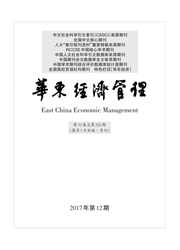

 中文摘要:
中文摘要:
文章引入错位指数对旅游业发展的“资源诅咒”现象进行定量研究,结合旅游资源的相对效率评价,提出安徽省各地区旅游资源的开发建议。研究表明:2005,2010年合肥负向错位指数最大,宣城正向错位指数最大;皖中旅游资源总效率受纯技术效率驱动较大,旅游资源利用集约化程度较高,皖北旅璐资源总效率受规模效率驱动较大,旅游资源利用属于粗放型方式;区域旅游资源相对效率除了与旅游资源禀赋相关外≯与第二产业生产总值、第三产业生产总值、人均GDP、全社会固定资产投资、互联网宽带用户数、货物进出薅总额、住宿和餐饮业营业额等因素也密切相关;根据错位指数与总效率的排名,对各地区未来旅游资源开发提出相应的建议。
 英文摘要:
英文摘要:
By using tile method of asynchronous index, the paper quantitative studies the phenomenon of "resource curse" in the progress of tourism developing. With the evaluation of the relative efficiency of tourism resources, the paper proposes recommendations for the development of regional tourism resources. The results show that: firstly, in 2005 and 2010, the maximum of negative asynchronous index is in Hefei, the maximum of positive asynchronous index is in Xuaneheng. Secondly, the whole efficiency of tourism resources in central Anhui is determined by pure technical efficiency, and belongs to the intensive growth mode, but the north Anhui is determined by scale efficiency, and belongs to the extensive growth mode. Thirdly, the relative efficiency is related to tourism resources endowments, the secondary industry, the tertiary imtustry, per capita GDP, total fixed asset investment, interact broadband users, imports and exports, accommodation and eatering indutry turnover. Lastly, according to the ranking of asynchronous index and the whole efficiency, the paper proposes some sug gestions for the development of tourism resources of each area in the future.
 同期刊论文项目
同期刊论文项目
 同项目期刊论文
同项目期刊论文
 期刊信息
期刊信息
